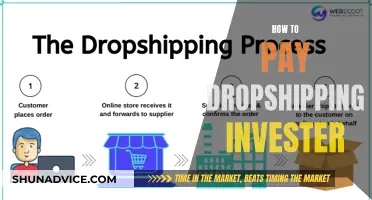
The Health Insurance Marketplace, also known as the marketplace or health exchange, is a service run by the federal government that helps individuals, families, and small businesses compare health insurance plans for coverage and affordability. The marketplace is an easy way for people to find health insurance plans available in their area, with costs indicated by metal tiers. While the marketplace offers a range of plans to suit different budgets, individuals must pay the insurance premium themselves, unless they qualify for a government subsidy. On the other hand, employer-sponsored health insurance, also known as group benefits plans, are often more affordable as employers share the cost of insurance premiums. However, employer-sponsored plans offer less customization and are tied to one's employment.
| Characteristics | Values |
|---|---|
| How to save on health insurance | Premium tax credits reduce the cost of health insurance |
| Who qualifies for the Health Insurance Marketplace? | Be a U.S. citizen or national |
| How to qualify for cheaper marketplace insurance | Household income and size |
| Average cost of health insurance through the marketplace | $469 a month for a 40-year-old individual |
| How does the health insurance marketplace help? | Find health insurance coverage available in your area and shows the costs for premiums, deductibles and copayments |
What You'll Learn

Income-based premium tax credits
The premium tax credit (PTC) is a refundable credit that helps eligible individuals and families cover the premiums for their health insurance purchased through the Health Insurance Marketplace. The amount of the premium tax credit is based on the income estimate and household information provided on the Marketplace application. The PTC lowers the monthly premium for a Marketplace health insurance plan.
To be eligible for the PTC, you must meet certain requirements and file a tax return with Form 8962, Premium Tax Credit (PTC). For tax years 2021 and 2022, the American Rescue Plan Act of 2021 (ARPA) temporarily expanded eligibility by eliminating the rule that taxpayers with a household income above 400% of the federal poverty line cannot qualify for a premium tax credit. This means that if your income is above 400% of the federal poverty level, you may now qualify for premium tax credits.
If you have received unemployment compensation for any week in 2021, your household income is considered to be no greater than 133% of the federal poverty line, and you meet the household income requirements for eligibility. Additionally, you must not file a tax return using the filing status of "Married Filing Separately." There is an exception to this rule for certain victims of domestic abuse and spousal abandonment. You also cannot be claimed as a dependent by another person.
When you enroll, the Marketplace will determine if you are eligible for advance payments of the PTC, which are amounts paid directly to your insurance company to lower your out-of-pocket costs. It is important to report any income and household changes to the Marketplace as they happen, as these may impact the amount of your premium tax credit. For example, if your income increases or you lose a member of your household, you may qualify for a lower premium tax credit. On the other hand, if your income decreases or you gain a household member, you may qualify for a bigger premium tax credit.
At the end of the year, if you have taken more advance payments of the PTC than you are eligible for, you may have to pay back the difference when you file your federal income tax return. This process is called "reconciling" the advance payments with the actual premium tax credit you qualify for based on your final income for the year. Conversely, if you have taken less than you are eligible for, you will receive the difference as a refundable credit.
Madoff's Victims: A Global Reach
You may want to see also

Employer-sponsored health insurance
ESI is a voluntary, private health insurance option, primarily serving residents who are not elderly, poor, or disabled. It is an efficient way to provide coverage to working families, and the tax benefits of employer-based coverage make it an attractive option. However, it often results in uneven coverage, especially for those with low wages or those working for smaller companies.
There are two ways employers can fund health benefits for their workers: purchasing a health insurance policy from a state-licensed health insurer (insured plan), or paying for healthcare directly with their own assets (self-funded plan). Most ESI enrollees are covered by large employers, who often opt for self-funded plans. To protect themselves from unexpectedly high claim amounts, employers with self-funded plans may purchase stop-loss coverage insurance.
ESI plans can be comprehensive or limited in their benefits. Comprehensive plans cover a large share of hospital, physician, and prescription costs incurred by a family in a year. Service-specific benefits include dental or vision care plans, while supplemental benefit plans provide additional coverage in certain circumstances (e.g. $100 per day if hospitalized).
The Affordable Care Act (ACA) requires employers with at least 50 full-time employees to offer affordable, minimum-value insurance to full-time workers (30+ hours per week) or face a tax penalty. This mandate was phased in for larger companies starting in 2015 and applied to all companies with 50+ full-time employees by 2016.
While ESI is a dominant source of health coverage, it faces challenges related to affordability and access to care. The cost of good ESI coverage can strain both employers and employees, especially those with lower wages. Additionally, ESI policies often have significant deductibles and out-of-pocket costs, which can make obtaining care more expensive for enrollees.
Invest Wisely, Retire Early: A Millionaire's Guide to Smart Investing
You may want to see also

Medicaid eligibility
Medicaid is a federal-state program that provides health coverage to over 77.9 million Americans, including children, pregnant women, parents, seniors, and individuals with disabilities. The program is aimed at low-income individuals, with eligibility based on income and/or resource levels below certain thresholds.
Financial Eligibility
The Affordable Care Act established the Modified Adjusted Gross Income (MAGI) methodology to determine financial eligibility for Medicaid. MAGI considers taxable income and tax filing relationships. MAGI-based eligibility does not allow for income disregards that vary by state or eligibility group and does not include an asset or resource test. However, certain individuals are exempt from MAGI-based income rules, including those with eligibility based on blindness, disability, or age (65+).
Non-Financial Eligibility
In addition to financial criteria, individuals must meet specific non-financial eligibility criteria for Medicaid. They must be residents of the state in which they are receiving Medicaid and either US citizens or certain qualified non-citizens, such as lawful permanent residents. Some eligibility groups are also limited by age, pregnancy, or parenting status.
Effective Date of Coverage
Once an individual is deemed eligible for Medicaid, coverage typically starts on the date of application or the first day of the month of application. Benefits may also be provided retroactively for up to three months before the application month if the individual would have qualified during that period. Coverage generally ends at the end of the month when an individual no longer meets the eligibility requirements.
Medically Needy Programs
States have the option to establish "medically needy programs" for individuals with significant health needs whose income exceeds the limits for other eligibility groups. These individuals can become eligible by "spending down" their income above the state's medically needy income standard on medical and remedial care expenses. Once these expenses exceed the difference between the individual's income and the state's standard, they can receive Medicaid coverage for the cost of services exceeding their incurred expenses.
State Flexibility
States have flexibility in implementing Medicaid and can choose to cover additional groups beyond the federally mandated ones. They can also establish spend-down programs for eligibility groups based on blindness, disability, or age, even if they operate a medically needy program.
Angel Investors: Unlocking the Dream of Home Ownership
You may want to see also

Tax surprises
If you receive health insurance through the public marketplace, you may be eligible for subsidies that reduce your monthly premiums. However, this can lead to a tax surprise when it's time to file your tax return. These subsidies are technically advance tax credits, and if your income is higher than what you estimated when enrolling, you may have received more aid than you were entitled to. As a result, you may have to pay back the excess at tax time.
To avoid this tax surprise, it's recommended to perform a midyear income check and review your account details. If your income has increased, you should update your estimate so that your subsidies can be adjusted accordingly. Similarly, reporting a drop in income can result in larger monthly subsidies. It's important to keep your account information up to date and report any life changes, such as marriage or a new dependent, as these can also impact the size of your aid.
The Affordable Care Act (ACA) health insurance marketplace offers premium tax credits that reduce the cost of health insurance for eligible individuals. These tax credits are available for households with incomes between 100% and 400% of the federal poverty level. Additionally, if your household income falls below 138% of the federal poverty level, you may qualify for Medicaid, which provides low-cost or free health coverage.
The ACA has set up two types of health insurance marketplaces: the federal marketplace, run by the federal government at healthcare.gov, and state-run marketplaces, operated by individual states. These marketplaces allow individuals to compare health plans, enroll in or change their health insurance plan, and find out about tax credits and subsidies.
It's important to note that the tax consequences of investments and savings can be complex, and the impact on marketplace health insurance may vary depending on individual circumstances. Therefore, it is always advisable to consult with a tax professional or financial advisor to understand how your specific situation may affect your taxes and health insurance options.
Best Currency Bets: Where to Invest Now
You may want to see also

Premium subsidies
The premium tax credit helps lower your monthly premium expenses. Individuals and families who qualify for this subsidy will pay between 0% and 8.5% of their incomes for a mid-level plan premium (the "benchmark silver plan"). The government pays anything above that amount. The amount of the tax credit is based on the price of the benchmark silver plan in your area, but you can use your premium tax credit to purchase any Marketplace plan, including Bronze, Gold, and Platinum plans.
You can choose to have your tax credit paid directly to the insurance company so that you pay less each month, or you can decide to wait and receive the tax credit as a lump sum when you do your taxes for the year. It's important to note that if you receive too much or too little of a premium subsidy, you will need to pay back the excess or receive the remaining amount, respectively, when filing your taxes.
The cost-sharing subsidy is another type of subsidy available only to people purchasing their own insurance who are eligible for a premium tax credit and make between 100% and 250% of the poverty level. This subsidy helps reduce out-of-pocket costs when you use healthcare services, such as doctor visits or hospital stays.
To estimate your eligibility for subsidies and understand how much you can expect to spend on health insurance, you can use tools like the Health Insurance Marketplace Calculator. This calculator takes into account your income, age, and family size to provide you with an estimate of your potential financial assistance.
Stock Market: Invest Now or Later?
You may want to see also
Frequently asked questions
Your eligibility for marketplace health insurance is based on your income and household size. If your investments and savings contribute to your overall income, they may affect your eligibility for marketplace health insurance. It is important to report any changes in your income to avoid unexpected costs or issues with your coverage.
The Health Insurance Marketplace is a service run by the federal government that helps individuals, families, and small businesses compare health insurance plans, enroll in or change a health insurance plan, and find out about tax credits for private insurance or health programs like Medicaid or the Children's Health Insurance Program (CHIP).
You may qualify for cheaper health insurance based on your household income and size. Households with incomes between 100% and 400% of the federal poverty level receive premium tax credits to lower health care costs.
Marketplace health insurance offers individuals more control over price and allows them to choose a plan that fits their budget. It also enables them to select a plan that their preferred doctors are already in-network with, so they don't have to find a new healthcare provider.







